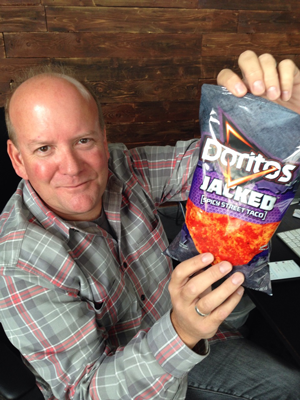In this day and age, digital marketers have the ability to be pickier than ever when it comes to new software. For every marketing problem, there are at least a handful of solutions to choose from; however, they all come with a price attached. One of the most painstaking jobs that...
It’s now 2017. We marketers have been chanting for “More data!” for years… and I think we can agree: we got it. Marketers use between 3 and 15 (!) data sources in their marketing, and the problem more often than not is that it doesn’t all live somewhere we can get to it or make sense of it.
From time to time, the discussion on the Only Influencers' Email list turns to whether we as marketers need to be complex or not. Some email marketers say "Blast away!" Others say, "Let's be smarter than the average bear."
Let's get one thing straight right away: if you see yourself as a button-pusher, and if your email strategy is just to blast out campaign after campaign, this article is not for you. Unless you hunger for more. In which case, stick around.
In the middle of rushing to send the latest announcement, update, sale email or whatever, it can be easy to forget the “who” and the “why”. But to maximize results, marketers need to know their audience well enough to know who they are sending to, and why that message will be important to that person. Do this by creating a customer journey for each segment of your audience.
“I have more than enough time to do everything I want to do to make my email marketing program more effective.”
-- said no email marketer ever
We talk a lot about how to wake up inactive subscribers and customers, but none of the usual strategies and tactics tackle one of the root causes: Your email's personality doesn't appeal to most of your subscribers.
Email automation is not the panacea for email marketing that many articles seem to suggest.
The story goes “buy a leading edge automation platform” and your email marketing is no longer spam and strategy is improved double quick.
I’ve never seen this to be true and have certainly spoken to too many email marketers who have found out it’s not true - the hard way.
Email strategy is not created by buying some cool tech.
Open rates across industries average somewhere between 20% and 25%, depending on which benchmark you look at. Not everyone is lucky enough to meet or exceed the benchmark though. Every once in a while, I meet a good marketer who has really bad open rates: between 1% and 5%. No, they aren’t spammers, but they’re stuck with the results of years of poor email marketing practices. What do you do if you’re stuck with bad open rates? Here are some ideas to revive your list:
Last week I was honored to be included on a list of ’The 20 Best Email Marketers You Should Follow and Steal From’ published by GetResponse. A colleague asked if that last part, “Steal From,” bothered me at all.
Last Thursday, people sat down with family and friends to celebrate Thanksgiving and eat their hearts out. Whether the tradition is to eat turkey, tofurkey, or chinese takeout, one things is for certain, most of the people who are busily enjoying a large meal on Thursday are ready to shop on Black Friday and Cyber Monday. In early October, National Retail Federation released their forecasted numbers for 2016. While the 2015 holiday season didn’t perform as well as estimated, increasing 3.2% over the previous year, they’re forecasting in-store sales to increase 3.6% to $655.8 billion. Moreover, NRF is forecasting non-store (online sales) to increase a whopping 7-10% to as much as $117 billion.
The just-concluded Presidential election was – in a word – interesting.
As a marketer, it was fascinating watching two diametrically opposed candidates take each other on. This was not a test where one candidate was just slightly different than the other – it was a case where the candidates could not have been more opposite.
While you may not be thrilled with the results, there were three key things that all marketers - and especially email marketers - can take away from the drama to make each and every one of their programs be more successful.
Digital marketing leaders continue to promise consumers a true 1:1 personalized interaction. We have all said it, preached it, and many of us have it tattooed somewhere. Right Message. Right Time. Oh, Right Channel. Recently. Right Person.
Simple: load up the data, drag and drop, press magic button, personalization.
We already know that email can form the hub of your digital marketing program, with the email address housing all of your information about each customer in your database. Now, I want you to think how email testing can also drive your multichannel testing program to gain insights across your entire customer database.
“Why is my mail being blocked if I still get spam?”
It’s almost an inevitable question when handling delivery issues. I understand why I get it so often. People look in their inbox and see this mail is clearly spam and it’s in the inbox. But they look at the mail they send that they know isn’t spam and it ends up in the bulk folder. It’s logical to ask why legitimate marketers have to follow all these complicated and arbitrary rules to reach the inbox when spammers reach the inbox and they don’t follow any of the rules.
68% of online shoppers abandon their carts. Sad, right? All those lonely, forgotten products… not to mention all that potential revenue your business is missing out on. For retailers, that comes out to $18 billion annually.
As you head into the frenzy of the holiday email-marketing season, take a minute to step back and appreciate email's great strength as the original disruptive marketing channel.
Email, in fact, is enjoying a renaissance! Those of us who have made email the center of our work lives can rightly feel vindicated when study after study shows people prefer email for brand communications. As shown below from Econsultancy’s Email Marketing Census 2016, the ROI still outshines every other channel from print to broadcast to direct and social.
Some of the most effective email marketing campaigns are actually based on very simple ideas. Here’s a campaign that took very little effort but generated nearly $0.75 per email – along with the 5 simple ideas behind the program.
The way we test today only works with batch and blast
In the last few years digital marketing has been transformed. Marketers have moved from sending the same message to everybody on the list – batch and blast, to segmentation, where messages are specific to particular customer segments or persona’s. According to the 2016 Econsultancy Email Industry Census the majority of respondents claim to be doing basic segmentation while around 1/3 claim to be doing advanced segmentation.
As the holiday spending frenzy approaches, digital marketers should have a multi-point plan to capitalize on the busiest season of the year. If you don’t, you’re leaving money on the table. Consumers are the most active and spend the most money during the holidays.
It’s been just over a year since EEC 2015 and the panel on deliverability during which some of the largest inbox providers gave the audience some valuable insights into their definitions of engagement and how that relates to inbox placement. For those of you who missed that panel and are new to this debate Massimo Arrigoni wrote a very good summary on the Mail Up blog. What excited me most about the information the inbox providers shared was, for the first time since I got involved in email marketing we had valuable information direct from the horse’s mouth on what mail service providers really look at.

 How to resolve AdBlock issue?
How to resolve AdBlock issue? 


















